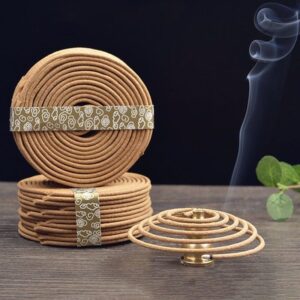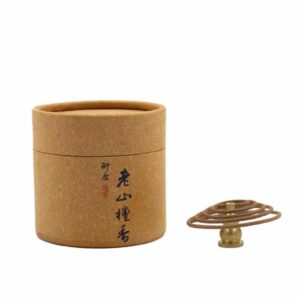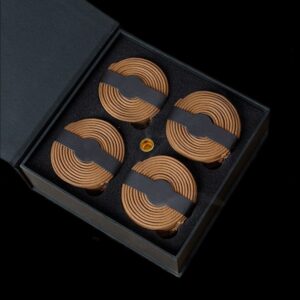The use of incense has been around for centuries, throughout different parts of the world and time periods. Incense smells marvelous, helps set a calming mood, produces beneficial aromatherapy effects, and is even thought to have spiritual benefits as well! But what exactly is incense? What are its various forms? How do you choose the perfect type for your needs? In this complete guide to incense, we’ll explore all these questions so you can begin mastering the art of using incense in your home or space. Plus, learn how it can help improve your mental health and overall well-being. Let’s dive right in!
What is Incense?
Incense is a mixture of fragrant materials, burnt to release fragrant smoke. The word “incense” comes from Latin, which means “to burn.” Its use dates back to ancient times when different materials were burnt to dispel negative energies or to attract blessings. The Egyptians were one of the earliest civilizations known to use incense in their religious offerings. The use spread to other cultures, such as the Greeks, Romans, and Chinese.
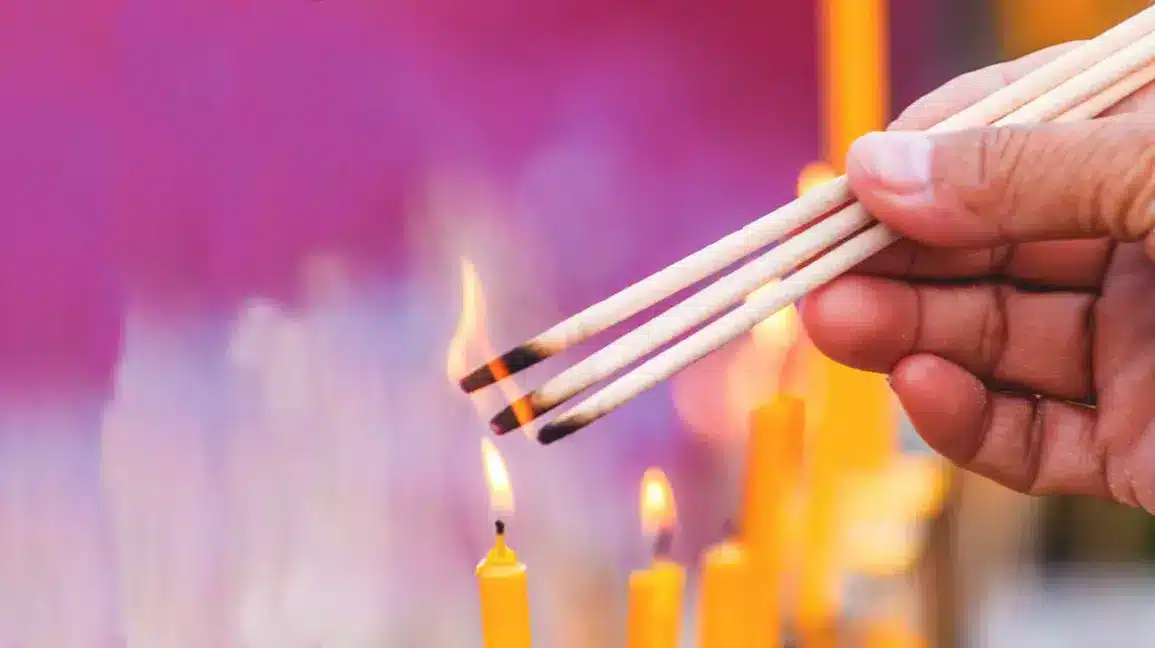
Incense comes in different forms, depending on the culture or location. For instance, Japanese incense is typically made of sandalwood, aloeswood, or cinnamon, while Indian incense is usually made of bamboo sticks coated with aromatic paste. Tibetan incense, on the other hand, is made of herbs and plants found in the Himalayan regions.
Incense is believed to have several functions, depending on its use. In religious and spiritual settings, incense is burnt to purify the air and to create a serene atmosphere for meditation and reflection. It also symbolizes connecting to the spiritual realm and honoring the divine. Incense is also used in traditional ceremonies such as weddings, funerals, and births. The smoke is thought to dispel negative energies that may affect the ceremony.
Different types of incense have various properties and use. For instance, lavender incense is used for stress relief and relaxation, while frankincense incense is used for its meditative and healing properties. Cedarwood incense is used for purification, protection, and grounding. Sandalwood incense is used for spiritual awareness and promoting tranquility.
To use incense, you will need an incense burner, which is a container that holds the incense as it burns. The burner is typically designed to release the smoke and ash collected from the incense. To light the incense, hold the tip over a flame until it is ignited, then blow it out to allow it to smolder. You can then place it on the burner, and it will begin to release fragrant smoke.
Incense is a signature part of various cultures and religious and spiritual settings. Whether you use it for its therapeutic properties or to connect with the divine, incense remains significant to many people. Understanding the history, types, and uses of incense will help you appreciate this mystical smoke even more. With its ability to enhance relaxation, meditation, and spiritual connections, it is no wonder incense has been around for centuries.
Where did incense originate from?
The use of incense dates back to ancient civilizations, and its origins are shrouded in mystery. Historians suggest that it was first used in ancient Egypt and Babylon, where it was used in religious ceremonies and for medicinal purposes. From there, it spread to other parts of the world, including India and China, where it became a popular part of religious rituals and meditation practices.

In India, incense is an integral part of daily spiritual practices, and it is used to purify the air, increase concentration, and create a calming atmosphere. In the ancient Vedic scriptures, the use of incense is mentioned as a way to purify the mind and awaken the senses. Incense is also used in Ayurvedic medicine to treat a variety of health issues, such as depression, anxiety, and insomnia.
In China, incense is an important part of Taoist culture, and it is used in temples and homes to create a peaceful environment. According to tradition, incense was brought to China by Buddhist monks during the Han dynasty, around 200 BC. The practice of burning incense soon became widespread and extended beyond religious practices, with people burning incense at home for their own enjoyment.
In Japan, incense is used for both spiritual and practical purposes. The tradition of using incense in Japan is called Kōdō, which translates to “the way of incense”. Kōdō is a form of meditation involving the appreciation of different aromas and the effects they have on the mind and body. It is also used in Japanese tea ceremonies to create a relaxing and peaceful setting.
Incense has also played an important role in the Western world, particularly in the Catholic Church. In the Middle Ages, incense was used to purify the air in churches and as a symbol of the Divine presence. It was also believed to ward off evil spirits and protect against disease. Today, incense is still used in Catholic and Orthodox churches during religious ceremonies.
From ancient Egypt to modern-day spiritual practices, incense has been a valued tool for enhancing meditation, relaxation, purification, and creating a peaceful atmosphere. The origins of this fragrant smoke are shrouded in mystery, but one thing is certain – its popularity has spanned across cultures and religions for centuries. Whether you burn incense as part of your daily spiritual practice or simply enjoy the aroma, the history of incense is fascinating and continues to be an important part of diverse cultures and spiritual practices around the world.
What does the incense symbolize?
The use of incense during ceremonies and rituals dates back to ancient times. Incense is an important aspect of many cultures and religions worldwide, but what does incense symbolize? We will explore the various meanings behind incense and its significance in different traditions.
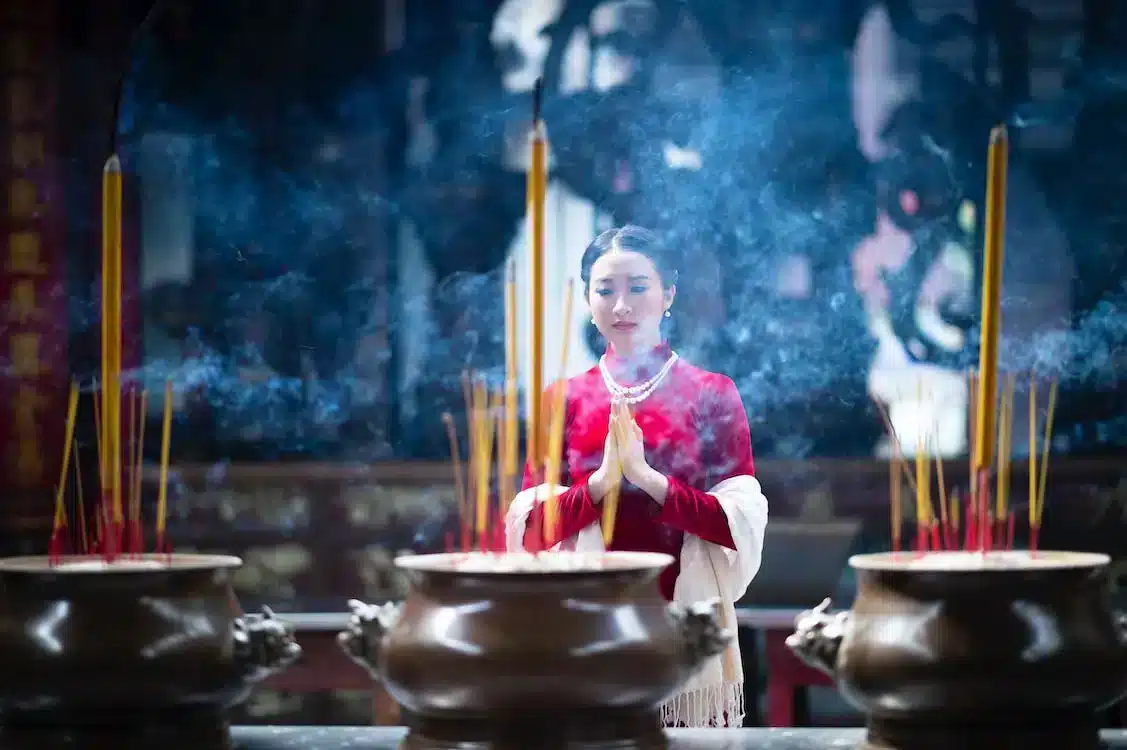
- Spiritual Cleansing
Incense is often used to purify and cleanse the environment, as smoke is believed to have a purifying effect. In many spiritual practices, it is customary to purify the space and prepare it for ritual or meditation by burning incense. The use of incense can create a calm, peaceful atmosphere that promotes relaxation and inner reflection.
- Offering to the Divine
Incense is also used as an offering to the divine. In many cultures and religions, it is believed that the smoke from burning incense carries prayers and offerings to the gods or ancestors. The fragrant smoke of incense is thought to be a symbol of the essence of life and is often accompanied by prayers or mantras.
- Aromatherapy
In addition to its spiritual significance, incense also has practical uses. The aroma of incense is believed to have therapeutic effects and can be used for aromatherapy. Different scents can have different effects on the body and mind. For example, lavender incense is used for relaxation, while peppermint incense is used to stimulate the mind and increase focus.
- Symbol of Transience
The fragrant smoke of incense is also believed to represent the transience of life. The smoke rises and disappears, just as life is fleeting and impermanent. Incense serves as a reminder that life is short and should be appreciated in the present moment.
- Connection to Tradition and Culture
Lastly, incense can serve as a symbol of tradition and culture. Many cultures have their own unique scents and blends of incense that hold special significance. Burning incense can connect people to their cultural heritage and facilitate a sense of belonging and community.
In conclusion, incense symbolizes many things – spiritual purification, offering to the divine, aromatherapy, transience of life, and connection to tradition and culture. The use of incense is a common thread that weaves together various cultures and spiritual practices across the world. Whether used for practical or spiritual purposes, incense can create a calm, welcoming atmosphere that invites us to connect with ourselves, each other, and the divine.
Incense benefits: What is incense good for?
Incense has been used for centuries in various cultures around the world. It is known for its distinct and pleasing scent, but it is more than just a pleasant aroma. Incense has numerous physical, emotional, and spiritual benefits. In this blog post, we will discuss the different ways incense can enhance your daily life and why it is essential to incorporate it into your routine.

Relieves Stress and Anxiety
Incense has a calming effect on the mind and body, making it an excellent tool for reducing stress and anxiety. The aroma of incense can lower heart rate, and blood pressure, and promote relaxation. Burning incense also helps to clear the mind, making it easier to meditate, focus, and achieve a state of mindfulness.
Enhances Concentration and Focus
Another benefit of incense is that it helps to improve concentration and increase focus. The scent of incense has been found to stimulate parts of the brain that are responsible for memory and concentration. Burning incense while studying or working can create an atmosphere that improves productivity and enhances learning.
Promotes Physical Healing
Incense is also known for its physical healing properties. Certain types of incense can help alleviate respiratory problems like asthma, bronchitis, and coughs. Frankincense, sandalwood, and lavender are popular incense types that have antibacterial and anti-inflammatory properties to help soothe sore throats and headaches.
Creates a Harmonious Atmosphere
Incense can help create a peaceful and harmonious environment, which is ideal for meditation and relaxation. It is also believed to have cleansing properties that remove negative energy and promote positive vibes. Burning incense is common in spiritual practices because of this purifying and uplifting effect.
Boosts Mood and Creativity
The fragrant aroma of incense is linked to improving mood and creativity. It helps to brighten the atmosphere by increasing positivity and energy levels. It has also been found to inspire creativity by engaging the senses and stimulating imagination.
In conclusion, incense is more than just a pleasant scent. Its numerous benefits make it an essential tool in promoting physical, emotional, and spiritual well-being. Whether you burn incense during meditation or just as a daily ritual, the benefits are undeniable. So, the next time you light a stick of incense, take a moment to appreciate its wonderful aroma and all the good it can do for you.
-
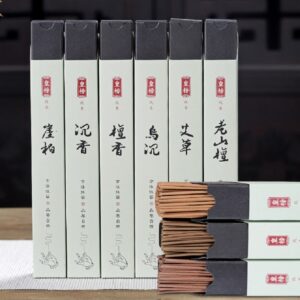 Old Mountain Therapeutic Natural Chinese Incense Sticks
Old Mountain Therapeutic Natural Chinese Incense Sticks -
 Indian Indoor Air Purification Natural Incense Sticks
Indian Indoor Air Purification Natural Incense Sticks -
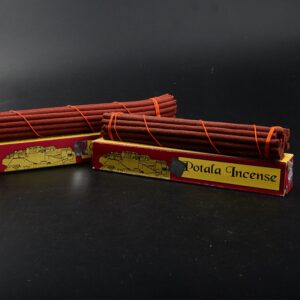 Genuine Potala Tibetan Natural Incense Sticks
Genuine Potala Tibetan Natural Incense Sticks -
 Palo Santo Holy Wood Handmade Incense Sticks
Palo Santo Holy Wood Handmade Incense Sticks -
 Aromatherapy Meditation Scent Natural Incense Sticks
Aromatherapy Meditation Scent Natural Incense Sticks -
 Nature And Flower Scents Non-Toxic Incense Sticks
Nature And Flower Scents Non-Toxic Incense Sticks -
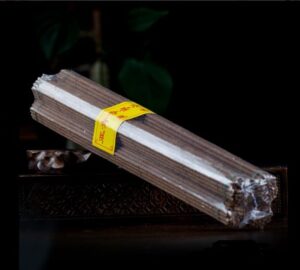 Natural Relaxant Sandalwood Scent Chinese Incense Sticks
Natural Relaxant Sandalwood Scent Chinese Incense Sticks -
 Natural Indian Scents Non-Toxic Incense Sticks
Natural Indian Scents Non-Toxic Incense Sticks -
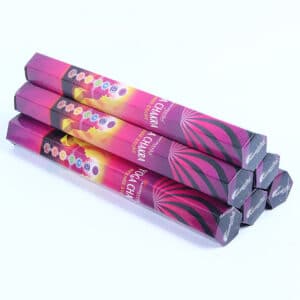 Yoga Chakra Meditation Sandalwood Natural Incense Sticks
Yoga Chakra Meditation Sandalwood Natural Incense Sticks
What religion is incense used in?
Have you ever been to a religious service and noticed the sweet smell of incense wafting through the air? Incense has been used in religious ceremonies for thousands of years and can be found in many different religions. From Buddhism to Christianity, incense plays a vital role in the spiritual practices of people all over the world.

Buddhism: Incense is an essential part of Buddhist meditation practices. It is believed to have a calming effect on the mind, helping to purify negative thoughts and emotions. In Buddhist temples, incense is burned as part of daily rituals, and it is also used during special ceremonies such as weddings and funerals.
Christianity: Although not as common as in other religions, some Christian churches still use incense during worship services. In the Roman Catholic Church, incense is used during important ceremonies such as Mass, to symbolize the prayers of the faithful rising to heaven. Some Anglican, Orthodox, and Lutheran churches also use incense during worship.
Hinduism: Incense is deeply rooted in Hindu culture and is used in a variety of ways. It is often burned as part of puja, a daily devotional ritual that involves offering prayers and lighting candles. Incense is also used during festivals and other important religious ceremonies, to purify the atmosphere and create a welcoming environment for the gods.
Islam: Incense has a significant role in Islamic tradition, and it is often used in mosques during prayer times. It is believed to purify the air and create a sense of calm and tranquility, helping to focus the mind during meditation and prayer.
Judaism: Incense was once used in Jewish temples as part of daily offerings to God. Today, it is more commonly used in the home, where it is burned during Shabbat (the Jewish Sabbath) and other important holidays.
Incense has played a significant role in religious and spiritual practices for thousands of years. It is used to create a sacred space, purify the air, and enhance the spiritual experience. Whether you follow Buddhism, Christianity, Hinduism, Islam, Judaism, or any other religion, incense can help you connect with your inner self and with the divine. So next time you encounter the sweet scent of incense, take a moment to appreciate the spiritual significance behind it!
Why do Muslims burn incense?
Have you ever been to a mosque or a Muslim household and smelt the sweet fragrance of burning incense? The burning of incense in Islam is a sacred and traditional practice that holds significant spiritual value. Incense has been used throughout history for various purposes such as aromatherapy, meditation, and worship.
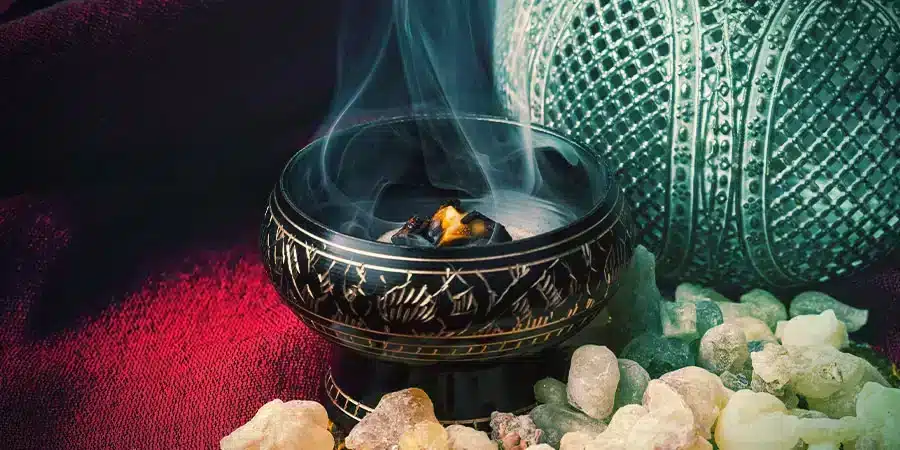
The burning of incense is a way to make a space more pure and calm for worship. Inhaling the fragrance of incense is believed to bring an individual closer to God and creates a peaceful and harmonious environment. It is also used to mask unpleasant odors and purify the air.
In Islamic rituals, such as Salat and Jummah, the burning of incense is done to enhance the spiritual benefits of the prayers. It is believed that such practices help to focus the mind and keep it from wandering during prayer.
Another reason Muslims burn incense is to commemorate the Prophet Muhammad and his family. The burning of incense along with the recitation of Ziyarat (poem praising the Prophet and his family) is done as a way to show respect and love towards the Prophet and his family.
The burning of incense in Islam is a sacred and traditional practice that holds significant spiritual value. The fragrance of incense is believed to enhance spiritual practices and create a peaceful and harmonious environment. The use of incense is mentioned in the Quran, and Muslims use it during various rituals and ceremonies. Overall, incense burning is a beautiful way to establish a deep spiritual connection with God and show love towards the Prophet and his family.
Is burning incense in the Bible?
Burning incense is an ancient tradition, dating back to the earliest civilizations. It has been used for its aromatic qualities and its ability to create a calming environment. But is burning incense a practice that is found in the Bible?

The use of incense in the Bible dates back to the time of the Israelites. Incense was used in the Tabernacle, and later in the Temple, as an offering to God. According to the book of Exodus, God commanded Moses to make an altar of incense, and Aaron and his sons were tasked with the responsibility of maintaining it. The incense was made from a mixture of spices, including frankincense, myrrh, and cinnamon.
In addition to its use as an offering, incense was also used to purify and sanctify the space in which it was burnt. In the book of Leviticus, it is said that the High Priest was to burn incense on the Day of Atonement in order to cleanse the Holy of Holies. The smoke of the incense was believed to be a symbol of how the prayers of the people would ascend to God.
The use of incense continued into the New Testament, with the Magi bringing gifts of gold, frankincense, and myrrh to the baby Jesus. It is believed that frankincense and myrrh were used as a form of incense, and their significance was tied to the divinity of Christ.
In the book of Revelation, incense is used as a symbol of prayer. John the Apostle writes that he saw the prayers of the saints, ascending like incense to the throne of God. This imagery is still used today in many Christian churches, where incense is burnt during prayer services.
The use of incense in the Bible is a long-standing tradition that has endured through the ages. Though it may have started as a means of offering to God, it came to symbolize so much more. Incense represented purity, sanctification, and the prayers of the people. Its use in the Bible continues to inspire us today, providing a way to connect with the divine and calm our spirits. Whether you use it in your daily life or simply appreciate its significance, the tradition of burning incense is one that is grounded in history and faith.
Why do Christians use incense?
Have you ever attended a Christian worship service and noticed the scent of incense wafting through the air? For some, this might be a familiar aspect of their religious experience, while for others, it might be a bit of a mystery. As a symbol of prayer and devotion in many religions, incense has a rich history in the Christian faith. Let’s explore the significance of incense in Christian worship and why Christians often use this fragrant substance during their religious practices.

Biblical references
Incense has played a role in Christian worship since biblical times. In the Old Testament, burning incense was often part of temple rituals, and the Book of Revelation speaks of incense as a symbol of prayer. The use of incense in early Christian worship is also documented in historical texts, with early church fathers describing the fragrant substance as a symbol of prayer and the presence of the Holy Spirit.
Symbolism of incense
In Christian tradition, incense is often regarded as a symbol of prayer, offering, and sacrifice. The smoke that rises from burning incense is seen as a representation of the prayers of the faithful rising to heaven. Additionally, the use of incense is often connected to the idea of purification, as the smoke is thought to cleanse the air and create a sacred space. By using incense during worship, Christians hope to create an environment that is conducive to connecting with God.
Significance of the fragrance
In addition to the symbolism of the smoke, the fragrant aroma of incense is also significant in Christian worship. The scents used in different types of incense are believed to correspond to different aspects of faith. For example, frankincense is often used in Christian worship and is believed to represent the divinity of Christ. Similarly, myrrh is associated with the suffering and sacrifice of Christ. By using different types of incense, Christians can create a multi-sensory experience that connects them to various aspects of their faith.
Practical reasons for using incense
While the symbolic significance of incense is certainly important, there are also practical reasons why Christians use it in worship. Burning incense can help to mask unpleasant odors, such as the smell of burning candles or the scent of dampness in an old building. Additionally, the soothing aroma of incense can help to create a calming atmosphere and enhance the overall worship experience.
Modern uses of incense in Christian worship
While the use of incense in Christian worship has a long history, it is still a common practice in many churches today. Some churches use incense during specific services or times of the year, such as during Advent or Easter. Others use it on a more regular basis as part of their weekly worship services. Some churches also use incense during special events, such as weddings or funerals, to symbolize the sacredness of the occasion.
Overall, the use of incense in Christian worship is a deeply symbolic and meaningful practice. From its biblical roots to its modern applications, incense offers Christians a unique way to connect with their faith and enhance their worship experience.
The Truth About Incense: Are They Healthy to Breathe?
If you’re someone who has been burning incense for relaxation and aromatherapy, you may have wondered whether the smoke is healthy to inhale. With so many different types of incense available on the market, it can be challenging to know which one is safe to use. Let’s examine whether incense is good or bad for your health and what precautions you can take to minimize any potential risks associated with its use.
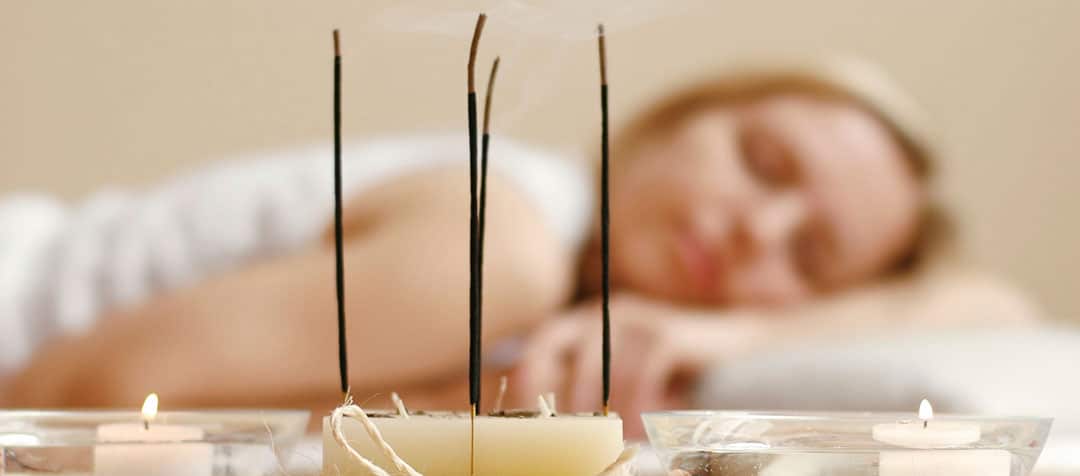
Incense has been used for centuries in various religious, cultural, and medicinal practices. It is made by burning a mixture of different plant-based materials and producing smoke that is believed to enhance relaxation, concentration, and mood. However, the smoke produced by incense contains tiny particles that can cause respiratory problems, especially for people with asthma or other respiratory conditions.
Additionally, incense smoke is a known source of indoor air pollution, which can cause health problems such as headaches, nausea, and fatigue. To minimize the risks associated with incense use, it’s essential to ensure that the room is well-ventilated and that you don’t inhale the smoke directly. Using natural incense without synthetic fragrances and only burning them for a short amount of time can also help decrease any potential risks.
Notably, the type of incense used can also impact the safety of breathing it in. Some incense sticks have toxic chemicals and heavy metals that release harmful vapors when burned, making them dangerous for people to breathe. The safest incense to use for aromatherapy is the natural, organic kind, made from herbs, flowers, and essential oils. These can help purify the surrounding air while offering a pleasant scent without releasing any toxic substances.
If you’re looking to enjoy the benefits of aromatherapy without any potential health risks, there are several natural alternatives to incense that you can try. You can use essential oils, herbs, and flowers in a diffuser or spray bottle, which offers a concentrated and more controlled form of aromatherapy. You can also opt for beeswax candles, which produce negative ions that help clean the air and create a calming atmosphere.
In conclusion, the answer to whether incense is healthy to breathe is somewhat nuanced. While it can offer several benefits to physical and emotional health, it also contains some risks. To ensure that you’re not exposed to any potential health hazards, it’s crucial to opt for natural, organic incense without any synthetic additives. Additionally, proper ventilation and limiting the amount of time you spend burning incense can help minimize any risks associated with breathing the smoke. Ultimately, the best solution for safe aromatherapy is to explore natural alternatives and find the one that works best for you.
How often should you burn incense?
Burning incense is a common practice in many cultures, religions, and spiritual practices worldwide. The aroma of incense is believed to purify the air, calm the mind, and create a peaceful and positive atmosphere. But one question often arises in the incense-burning community – how often should we burn incense? Is there a certain frequency that’s ideal, or is it just a matter of personal preference? Let’s explore the frequency of burning incense and its impact on your space, and how you can maximize the benefits of incense burning.

1. Define your purpose
Before determining the frequency of burning incense, you need to define your purpose. Do you want to burn incense to create a relaxing atmosphere, eliminate unpleasant odors, or use it as part of your spiritual practice? Based on your intent, you can decide how often to burn incense. If you’re using it occasionally to relax or as an air freshener, you can burn incense one to two times a week. On the other hand, if you’re using it for spiritual reasons, you can burn incense daily or even multiple times a day.
2. Consider the effects on your health
While incense can create a calming environment, burning it too frequently can negatively impact your health. Burning incense releases chemicals and smoke, which can cause respiratory problems and irritate the eyes and nose. Therefore, if you have a history of respiratory issues or are sensitive to smoke, it’s recommended to limit your usage to once or twice a week.
3. Assess the quality of the incense
The frequency of incense burning also depends on the quality of the incense. Low-quality incense may contain harmful chemicals that are released when burned, thus affecting the air quality of your space. The cheaper incense’s fragrance may not last as long or manifest its intended effect, and you’ll end up burning more. Therefore, it’s recommended that you opt for high-quality incense that is made from natural ingredients and has a long-lasting aroma. Burning high-quality incense will give you the most benefits, and you don’t need to burn it as often, making it more cost-effective.
4. Practice moderation
Moderation is key to the frequency of burning incense. Too much of anything can be harmful to your health and well-being. Therefore, it’s essential to create a balance and know when to use it sparingly. It’s also recommended that you vary the scents of incense you use throughout the week to avoid over-exposure.
5. Listen to your intuition
Lastly, there isn’t a one-size-fits-all approach to the frequency of burning incense. It’s all about intuition and what feels right for you. You may find that you love the smell and energy of certain incense so much that you want to burn them each day, or you may find that you prefer to burn them once in a while. Listen to your intuition, let your senses guide you, and trust your body’s response to the fragrance. When you burn incense, ensure you’re present in your space and meditate as you take in the aroma.
In conclusion, burning incense can have several benefits, including creating a peaceful environment, aiding relaxation and meditation, and improving air quality. However, how often to burn incense is subjective based on your intentions, quality of incense, and personal preference. You don’t need to burn incense every day, but it is recommended that you use high-quality, natural incense and practice moderation. Remember to listen to your intuition and enjoy the experience!
What to look for when buying incense?
Incense has been used for thousands of years for spiritual practices, religious ceremonies, and simply for its pleasant fragrance. If you’re interested in purchasing incense for your home or office, there are a few things to consider when choosing the perfect scent. Let’s discuss what to look for when buying incense so you can be sure to find the ideal scent for your space.

Know the Ingredients
Before purchasing incense, make sure you take a look at the ingredients. Some incense can contain synthetic fragrances and harmful chemicals that can affect your health. Instead, opt for incense that uses natural ingredients such as essential oils, herbs, and resins. These ingredients are not only safer for you but also have a more authentic aroma, creating a healthier environment in your home.
Consider the Purpose
Different types of incense are designed to create different environments. If you want to create a calming atmosphere, choose incense made with lavender or sandalwood. For a more invigorating atmosphere, peppermint or frankincense would be perfect. If you’re using incense for spiritual or religious purposes, do some research to find out which scents are suitable for your needs.
Think About Packaging
When choosing incense, consider the packaging. The packaging will speak to the quality of the incense, and also how it will blend in your space. Look for incense packaged in a way that will preserve the fragrance until you’re ready to use it. If the packaging is poorly designed, it might cause the incense to spoil and lose its fragrance.
Fragrance Strength
When looking for incense, consider how strong the fragrance is. If you have a large space, you might need a stronger scent for the fragrance to spread fully. But, if you have a smaller room or will be lighting multiple sticks, go for a lighter scent to avoid it overpowering your space.
Price Point
Price is another factor to consider when buying incense. While you want to find something that is budget-friendly, you also want to ensure that a lower-priced option does not affect the quality of the incense. Expensive incense doesn’t always mean high quality, so do some research to find a range that fits your budget.
When it comes down to choosing incense, it never hurts to try out a few products before settling on one. Look for something that is comfortable in your space, and blends well with your personality. With our guide, you can make sure you choose the perfect incense scent that’s right for you. By considering ingredients, purpose, packaging, fragrance strength, and price point, you can find the incense that best suits your taste and budget. Remember, burning incense is all about creating a comfortable environment that feels inviting and peaceful.
-
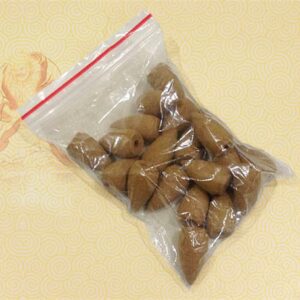 Ornamental Sandalwood Natural Backflow Incense Cones
Ornamental Sandalwood Natural Backflow Incense Cones -
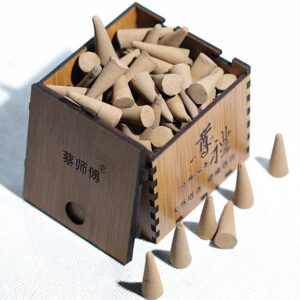 Tasmania Indoor Fragrance Type Scented Incense Cones
Tasmania Indoor Fragrance Type Scented Incense Cones -
 Indoor Aromatherapy Backflow Non-Toxic Incense Cones
Indoor Aromatherapy Backflow Non-Toxic Incense Cones -
 Soothing Fragrant Backflow Scented Incense Cones
Soothing Fragrant Backflow Scented Incense Cones -
 Sandalwood And Nature Scent Backflow Incense Cones
Sandalwood And Nature Scent Backflow Incense Cones -
 Aromatic Indoor Tower Natural Scented Incense Cones
Aromatic Indoor Tower Natural Scented Incense Cones -
 Indian Air Purification Safflower Musk Natural Incense Cones
Indian Air Purification Safflower Musk Natural Incense Cones -
 Mixed Pagoda Sandalwood Backflow Scented Incense Cones
Mixed Pagoda Sandalwood Backflow Scented Incense Cones -
 Mint Scent Triangular Tower Natural Incense Cones
Mint Scent Triangular Tower Natural Incense Cones
What are the Different Types of Incense?
Incense has been an essential part of our culture since ancient times. It has been used for religious ceremonies, meditation, aromatherapy, and even to cover up unpleasant smells. However, not all incense is made equal. There are different types of incense, each with its unique properties and benefits. In this section, we will explore the three most common types of incense: stick incense, cone incense, and coil incense. So, let’s dive in and discover what makes each type special.

Stick Incense
Stick incense is the most common type you will come across in the market. They are thin bamboo sticks coated with a mixture of herbs, resins, and essential oils. They come in a wide variety of scents, from floral to musky to woody. Stick incense is easy to use, you only need to light the tip of the stick and let it burn on a holder. Its smoke will waft into the air, filling your room with its scent. One benefit of Chinese incense sticks is that it is perfect for Zen meditation and relaxation.
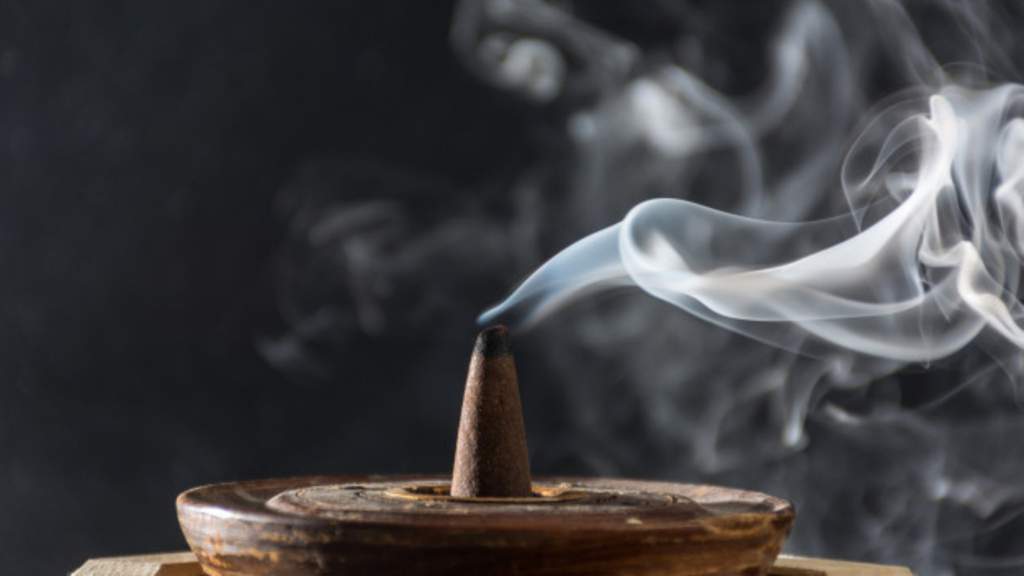
Cone Incense
Cone incense is similar to stick incense, only it is cone-shaped instead of thin bamboo sticks. Like stick incense, cone incense has the same mix of herbal flavors. However, it is more concentrated and burns for a shorter time than stick incense. Backflow cone incense is best used to create an intimate or personal atmosphere. It is perfect for small gatherings, dinner parties, and yoga sessions. One benefit of cone incense is that it is easy to clean up. Unlike stick incense, you can dispose of cone incense after it burns out.
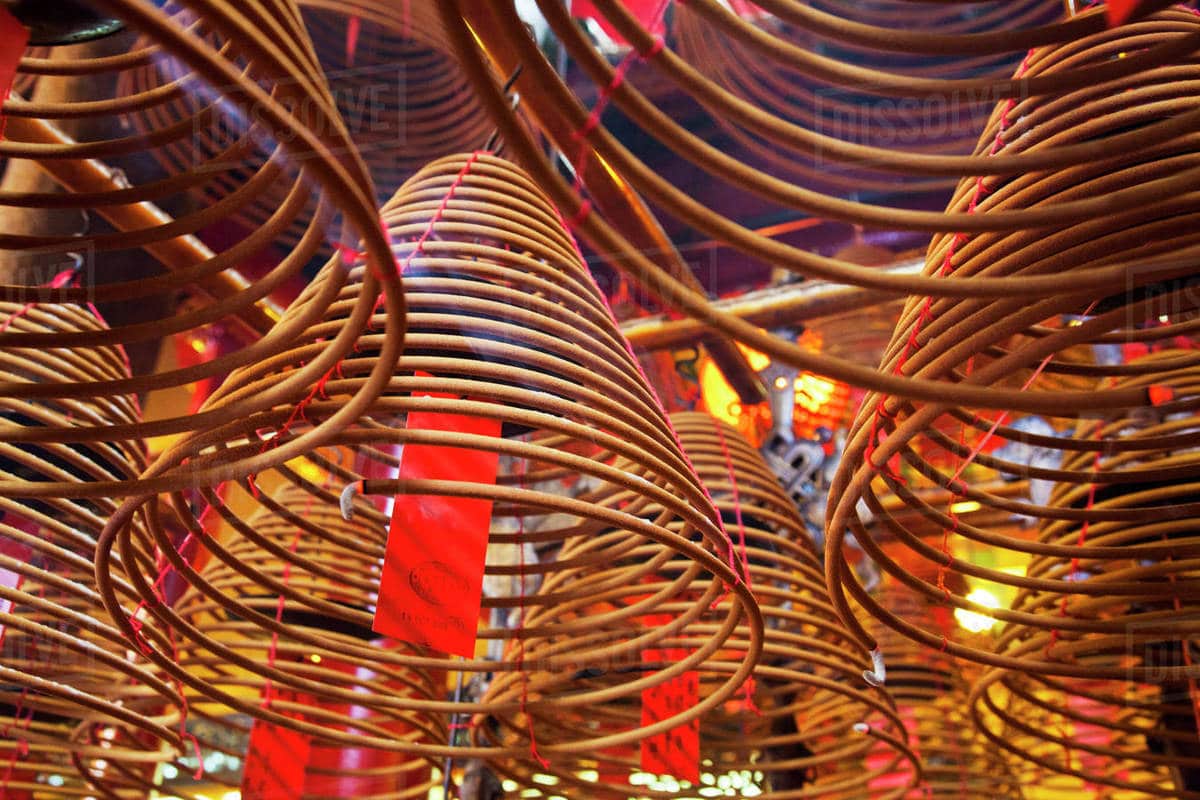
Coil Incense
Coil incense has gained popularity recently because it is environmentally responsible. They are a popular choice for outdoor settings, such as camping trips or backyard gatherings. Coiled spiral incense produces a slow-burning, aromatic smoke from a molded coil of aromatic materials. To use them, you need a coil incense burner. Once lighted, the coil will burn for hours, making it perfect for outdoor activities like camping. One benefit of using coil incense is that they burn slowly, reducing the chance of it getting blown away by the wind.
Powdered Incense
Powdered incense is the least commonly used type of incense. It comes in powdered form and is used by sprinkling it over a hot coal or heated resin burner. Powdered incense is the purest form of incense you can use, as they do not contain any fillers or hardwood blanks. They come in various scents, including frankincense, sandalwood, and myrrh. One benefit of powdered incense is that it is easy to control the strength of the smoke by adjusting the amount of powder you burn through.
Now that you know the different types of incense, it’s time to select the one that aligns with your purpose. If you’re looking for something that’s easy to use, then stick incense and cone incense are the best options for you. However, if you’re looking for something to use in outdoor settings, then coil incense is your best bet. Lastly, If you want something purer, powdered incense is the way to go. Regardless of your choice, incense has been known for its numerous benefits for centuries, and it’s a great way to add fragrance to your home while relaxing and meditating.
Why is Incense Illegal? The Surprising Truth
Blog Introduction: If you’ve ever been to an Asian country or visited a New Age shop, chances are you’ve encountered the enticing aroma of incense. For many cultures and traditions, incense is an important part of life. But while it’s beloved by many, incense isn’t legally sold everywhere. Why is incense illegal in some places? Let’s take a deeper look.

Why is incense illegal in some places?
Many countries, including the US, have restrictions in place for incense. The primary concern for banning incense is the potential health hazards associated with it. Burning incense releases particulate matter, which can cause breathing problems, especially for people with asthma or other lung conditions. Plus, the burning of incense can produce carbon monoxide and other harmful gases when burned in poorly ventilated areas. Some countries, like Canada and Australia, restrict the use of certain ingredients in incense.
Are there any health benefits to using incense?
Despite the health risks associated with incense, there are several potential health benefits to using it, especially if it’s made with natural and non-toxic ingredients. For example, certain herbs and resins used in incense have antibacterial, antifungal, and anti-inflammatory properties that can have a positive impact on health. Others can help reduce stress and anxiety and promote relaxation.
How can you safely use incense?
If you choose to use incense, it’s important to do so safely. Always burn it in a well-ventilated area and make sure to put out the incense when you’re done using it. Also, be mindful of other people in the area, especially those with lung conditions. If you’re pregnant or have allergies or sensitivities, it’s best to avoid incense altogether.
While incense may be beloved by many, it’s important to be aware of the potential health risks associated with it. That being said, if used safely and made with natural ingredients, incense can have several potential health benefits. Ultimately, it’s up to each individual to decide whether or not to use incense, but it’s always important to be aware of the risks and use it safely.
Will Incense Trigger a Smoke Alarm?
Many people use incense for various reasons – be it for religious rituals, meditation, or simply to create a calming ambiance. However, there is a common concern among incense users that lighting incense might trigger smoke alarms. We will try to answer this question and provide you with some useful tips to ensure that lighting incense doesn’t set off the smoke alarm.

Before we answer this question, let’s first understand what smoke alarms are and how they work. Smoke alarms are devices that use sensors to detect smoke in the air. When it detects smoke, it triggers an alarm to alert people of a potential fire hazard. Generally, smoke alarms are designed to detect a certain amount of smoke in the air before triggering an alarm. The amount of smoke that triggers the alarm depends on the sensitivity setting of the smoke alarm.
Now, coming back to our question – will incense trigger smoke alarms? The answer is, it depends on the sensitivity of the smoke alarm and the amount of smoke generated by the incense. Incense smoke is not as thick as cigarette smoke or cooking smoke, which means that it is less likely to trigger a smoke alarm. However, if the smoke alarm is highly sensitive, or if too much incense is used in a closed room, it may trigger the smoke alarm.
So how can you ensure that lighting incense doesn’t set off the smoke alarm? First, choose a well-ventilated space to burn incense. This will ensure that the smoke dissipates quickly and doesn’t accumulate in the air. Secondly, avoid burning too much incense at once, as this can generate a lot of smoke. Lastly, you can also consider using smokeless incense sticks, which are designed to produce minimal smoke.
It’s also important to note that smoke alarms can be temporarily disabled by pressing a button or switch on the device, but this should only be done in case of emergencies. Disabling a smoke alarm otherwise is dangerous and can put you at risk.
In conclusion, lighting incense may or may not trigger smoke alarms, depending on the sensitivity of the smoke alarm and the amount of smoke generated by the incense. However, by choosing a well-ventilated space, and burning minimal incense or smokeless incense sticks, you can reduce the risk of triggering the smoke alarm. Remember, smoke alarms are designed to ensure your safety, so never disable them unless there is an actual emergency. Happy incense burning!
What is the purpose of an incense burner?
There is something magical and mystical about incense holders. The smell of burning incense has been an integral part of many spiritual and religious practices, carrying a sacred and calming vibe that can transport us to another place and time. The special properties and purpose of incense burners have been used by people around the globe since ancient times. But what exactly is the purpose of these fascinating and cherished objects? Let’s explore the various uses and benefits of unique incense burners and how they can enhance your life.
-
 Beautiful Lotus Flower Ceramic Backflow Incense Burner
Beautiful Lotus Flower Ceramic Backflow Incense Burner -
 Ceramic Skulls Design Waterfall Backflow Incense Burner Holder
Ceramic Skulls Design Waterfall Backflow Incense Burner Holder -
 Buddha’s Hand Praying Monk Lotus Flower Zen Waterfall Backflow Incense Holder
Buddha’s Hand Praying Monk Lotus Flower Zen Waterfall Backflow Incense Holder -
 Spirit Animals Design Ceramic Waterfall Backflow Incense Burner
Spirit Animals Design Ceramic Waterfall Backflow Incense Burner -
 Mountain Waterfall Backflow Japanese Temple Incense Burner
Mountain Waterfall Backflow Japanese Temple Incense Burner -
 Japanese Walnut Wood With Brass Incense Burner
Japanese Walnut Wood With Brass Incense Burner -
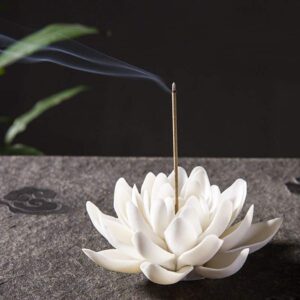 Porcelain White Lotus Flower Incense Burner
Porcelain White Lotus Flower Incense Burner -
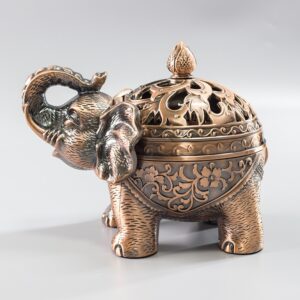 Sacred Elephant Alloy Incense Holder Burner
Sacred Elephant Alloy Incense Holder Burner -
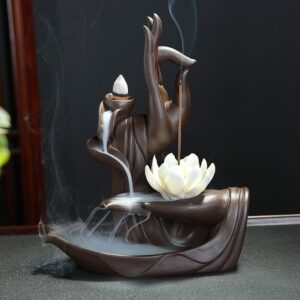 Ceramic Buddha Backflow Tathagata Lotus Incense Burner Holder
Ceramic Buddha Backflow Tathagata Lotus Incense Burner Holder
Spiritual and Religious Purposes
One of the most common uses of incense burners is for spiritual and religious purposes. Different cultures and traditions have specific types and scents of incense for certain rituals, including offerings, cleansing, purification, and meditation practices. In many Asian countries, incense is used to communicate with ancestors and gods, while in Christianity, it represents the prayers and offerings of worshipers. Burning incense in your home or sacred space can also help you connect with a higher power and cultivate a peaceful atmosphere for contemplation.
Aromatherapy Purposes
Cool incense burners are also popular for the therapeutic and aromatherapy benefits they offer. Burning certain types of incense, such as lavender or sandalwood, can help to reduce stress, anxiety, and depression while enhancing your mood and focus. The scents emitted by incense burners are known to have a direct effect on the limbic system of the brain, which controls emotions and memory. So, lighting up an incense stick or cone in your office or bedroom can help you calm your mind and rejuvenate your soul.
Purification and Cleansing Purposes
The best incense burners and holders are also widely used for purifying and cleansing spaces and objects. In many spiritual practices, burning incense is believed to have the power to clear negative energy and spirits from the environment, allowing only positive energies to enter. It can also be used to purify sacred objects such as crystals, jewelry, and tools to enhance their powers and effectiveness. So, if you feel like your space needs a fresh start or a boost of positive energy, try burning frankincense, myrrh, or white sage in an incense burner, and feel the transformation happen.
Decorative Purposes
Apart from the functional benefits, beautiful incense burners are also used for decorative purposes, adding a touch of style and elegance to your space. There are many different designs and styles of incense burners available, from traditional to modern, to suit your taste and preferences. You can also choose the size and shape of the burner based on where you want to place it, whether it’s on a shelf, table, or altar. So, not only do incense burners offer various benefits, they also serve as a delightful addition to your home decor.
Cultural and Historical Significance
Finally, incense burners hold cultural and historical significance, dating back to ancient times. There are many fascinating stories and legends associated with incense burners, such as the origin story of Frankincense, which is said to have been gifted by the Three Wise Men to the baby Jesus. The use of incense burners has also been documented in ancient Egyptian, Indian, Chinese, and Middle Eastern cultures, among others, with each culture having its unique style and symbolism for them. By owning and using an incense burner, you are also connecting with the rich history and traditions of humanity.
In conclusion, incense burners serve multiple purposes, each with its unique benefits and properties. Whether you’re looking to enhance your spiritual practice, purify your space, or add some style to your decor, incense burners offer a range of options to choose from. So, if you haven’t included them in your self-care or home rituals yet, give them a try, and feel the magic unfold. As the old proverb goes, “Where there is smoke, there is fire,” and where there is incense, there is a sense of bliss and harmony.
The Calming Benefits of an Incense Waterfall
Life’s pace is relentless. It often leaves us feeling drained and anxious. We all have different ways of dealing with stress, but some of us rely on incense or aromatherapy. The sight, scent, and sound of an incense waterfall can turn any atmosphere into an oasis of peace, instantaneously. We will discover the many benefits of an incense waterfall and why you should consider one for yourself.

Aromatherapy
We all appreciate the unique fragrance of incense, especially when it comes to aroma therapy. An incense waterfall provides a multitude of scents that impact our senses, and it can transport us to a tranquil state of mind. It eradicates anxiety, and depression, and boosts our mood by delivering aromas that improve brain functioning, memory, and focus.
Stress Relief
Incense can offer emotional and physical benefits by providing relief from stress and anxiety after a long day’s work. Watching it fall over and over again has a soothing effect that can work wonders when it comes to de-stressing. The waterfall itself can represent the constant flux of life and can be a source of mindfulness and a reminder to stay in the present moment.
Focus
Sometimes, it’s hard to concentrate and focus on the task at hand, whether it be work, studying, or even relaxing. A waterfall incense burner can provide aid in concentration because its repetitiveness can help us focus and be present for our responsibilities. It can provide us with the essential relaxation we need to tackle anything that comes our way.
Air Purification
Having fresh air to breathe is a fundamental aspect of a healthy lifestyle. A backflow incense burner would typically diffuse the incense smoke downwards, promoting the circulation of air, which can help purify the air around you. The Waterfall collects the incense’s ash, which can reduce the adverse impacts of smoke inhalation, and provide a healthy atmosphere to live or work in.
Elegant Decor
Why settle for dull when you can have elegant decor? Incense waterfalls often come in various designs and styles that would complement a room’s aesthetics or mood. The waterfall’s motion, in combination with the waft of aromatic scents, adds ambiance and elegance to any space. It can give the room a calming feel and add an inviting peaceful tone.
In conclusion, the benefits of a waterfall incense holder are numerous; from providing aromatherapy to stress reduction to purifying the air in your environment to enhancing the elegance of your space. It is not hard to see why incense waterfalls have become so popular in recent times. By incorporating an incense waterfall into your life, you can make peace, tranquility, and relaxation more accessible than ever before. Don’t hesitate; add an incense waterfall to your life today and experience the difference firsthand.
How to use an incense waterfall
Incense waterfall is not just a beautiful display but also a functional tool to elevate your space’s ambiance. A hot favorite in meditation retreats and yoga studios, incense waterfall is catching on as a go-to décor element, thanks to its mesmerizing presentation. It might seem a bit complicated to use at first, but once you get the hang of it, you’ll never look back. In this section, we will guide you through the step-by-step process of using an incense waterfall.
Step 1: Set up Your Incense Waterfall
The first step is to set up your incense waterfall. Always follow the manufacturer’s instructions while doing this to make sure you are doing it right. Usually, the setup involves placing the incense cone at the top of the waterfall, placing the waterfall over a burner, and plugging in the cord. Make sure you are placing the waterfall on a flat surface and that the cord is out of reach of children and pets.
Step 2: Ignite the Incense Cone
Once your waterfall is set up, it’s time to light the incense cone. Hold the incense cone at the top and light up the tip with a matchstick. Wait for a few seconds until the tip turns red, and then gently blow off the flame. Place the incense cone on the protruding metal part at the top of the waterfall.
Step 3: Observe the Waterfall’s Flow
As the smoke starts to rise, the incense waterfall’s magic begins. The smoke from the cone is pulled down by the cascading water, creating a beautiful smoke waterfall. As the smoke falls down, it leaves behind a pleasant fragrance, refreshing the room’s ambiance.
Step 4: Watch and Enjoy
Now that your incense waterfall is in full swing, it’s time to sit back and relax. Observe the smoke waterfall and let it take you to a place of tranquility. Enjoy the meditative sensation and let the fragrance soothe your senses.
Step 5: Clean Up
When your incense cone is finished, wait for the waterfall to cool down before handling it. The incense residue will be in the waterfall tray’s water, and you can easily dispose of it. You can also clean the tray thoroughly with soap and water once in a while to keep it in tip-top shape.
Zen Your Space with Incense Waterfall
Using an incense waterfall is one of the easiest ways to bring a spa-like ambiance to your home. Although it might seem intimidating at first, it’s easy to use once you get the hang of it. With a soothing fragrance and a mesmerizing visual display, an incense waterfall is sure to bring tranquility to your space. So, next time you feel stressed or anxious, light up your incense waterfall and allow yourself to breathe in serenity.
The Truth About Incense Waterfall Side Effects
Blog Introduction: Incense waterfall is a type of incense burner that has gained immense popularity in recent years. Its unique design makes it a sought-after addition to various households, meditation rooms, and yoga studios. Despite its charming appeal, there has been an ongoing debate about the potential side effects of using incense waterfalls. Let’s explore the potential side effects of incense waterfall and provide you with some helpful tips to make the most out of your experience.
1) Breathing difficulties
One of the most commonly reported side effects of using incense waterfalls is breathing difficulties. The smoke produced by incense can irritate the lungs and cause respiratory problems, especially in people with underlying health conditions. If you suffer from asthma, allergies, or any other respiratory issues, it’s best to avoid using incense altogether.
2) Headaches and dizziness
Another potential side effect of using incense waterfall is headaches and dizziness. The strong aroma of the incense can be overwhelming for some people, leading to these symptoms. If you’re using incense for the first time, it’s best to start with a small amount and gradually increase it to see how your body reacts.
3) Skin irritation
Incense waterfalls can also cause skin irritation for some people. This is particularly true for people with sensitive skin. If you notice any redness or itching after using incense, discontinue use immediately and consult your doctor.
4) Fire hazard
Incense waterfalls can also be a fire hazard if not used properly. The burning incense can fall outside the burner and cause a fire. It’s essential to keep the burner on a flat surface and away from any flammable objects.
5) Tips for safe use
There are several things you can do to ensure the safe use of incense waterfalls. Firstly, always use it in a well-ventilated room. Secondly, avoid using it for long periods of time. Thirdly, never leave the burning incense unattended. And lastly, always keep it away from children and pets.
In conclusion, while incense waterfalls can be a beautiful addition to any space, it’s important to be aware of the potential side effects that can come with them. If you’re prone to respiratory problems, headaches, or skin irritation, it’s best to avoid using incense altogether. However, with proper use and precautions, you can enjoy the benefits of incense waterfall without any adverse effects. Remember to keep safety in mind and enjoy your incense waterfall experience!
Where to buy Incense?
- Buy Chinese natural incense sticks
- Buy backflow incense cones
- Buy coiled spiral incense
- Buy cool and unique incense holders
- Buy waterfall backflow incense burners
Final Words
Incense is such an interesting and complex subject, but it’s clear that burning incense has many spiritually beneficial properties. It can assist us in increasing our awareness and enlightening our minds to encourage better thinking. For those seeking a more profound spiritual experience or closer connection with their faith, adding incense to their spiritual practice can create an even deeper level of focus and presence. From meditation to prayer, there are so many ways to tap into the power of incense — you just need to find the right type for your needs! So, if you’re looking for an entertaining way to elevate your spiritual practice or simply enjoy the fragrant smells of incense, next time you light up make sure to do your research and pick the best type for yourself. Enjoy!

